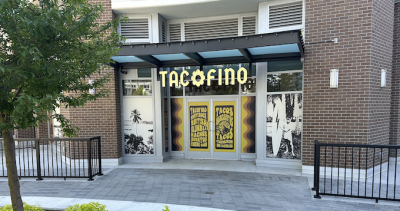Does Justin Trudeau have the guts to pry guns from their owners' cold, dead hands?
The job description for Canada's new Minister of Border Security and Organized Crime Reduction includes a bullet point that has many caught gun owners' attention.
"You should lead an examination of a full ban on handguns and assault weapons in Canada, while not impeding the lawful use of firearms by Canadians," reads a mandate letter signed by Prime Minister Justin Trudeau.
The minister is Bill Blair, Liberal MP for Scarborough Southwest, former chief of the Toronto Police Service, and head of the federal task force that drafted Canada's plan to legalize recreational cannabis.
The issue of gun control reemerged in Ottawa on July 22, 2018, after a man shot 15 people, killing two of them, on Danforth Avenue in Toronto.
Trudeau asked Blair to review gun control and Blair told reporters the task could eventually end with more restrictive regulations on guns in Canada. But it wasn't until his mandate letter was shared today (August 28) by the Prime Minister's Office that the public learned Blair's review will include an assessment of an outright ban on handguns and assault weapons.
According to the RCMP, there were roughly one million restricted and prohibited guns in Canada in 2016. (In Canada, the "restricted firearms" category primarily consists of handguns. The "prohibited firearms" category is made up of fully automatic weapons plus certain handguns. Shotguns and rifles are categorized as "non-restricted firearms and are were not counted in the RCMP's 2016 analysis.)
Nearly half of Canada's one million restricted and prohibited weapons were registered in Ontario. Alberta ranked second, with 173,000 registered there in 2016. B.C. was third, with 157,000.
If Canada does decide that members of the public should no longer be allowed to posses firearms that aren't designed for hunting, it does not mean that banned weapons would disappear from the streets overnight. Handgun owners could see their existing permits grandfathered, for example, and the government could simply stop issuing new permits. That sort of plan would see handgun and assault-weapon ownership phased out slowly, over the next six or seven decades. Or the government could create a buy-back program, where authorities would pay gun owners to relinquish each firearm they own, ahead of a ban that would be implemented several years in the future.
Blair will have examples to look to where other nations have strict gun regulations already in place. In the United Kingdom, for example. There, he'll also find that the rate of firearms-related deaths per 100,000 people was just 0.23 in 2013, according to GunPolicy.org.
Blair might also choose to study tight gun regulations in Australia. The rate of firearms-related deaths there was 1.04 in 2016
That compares to the United States, where gun regulations remain among the loosest in the developed world, and where the rate of firearms-related deaths was 11.96 in 2016.
Canada's rate of rate of firearms-related deaths was 2.13 in 2012, according to GunPolicy.org.















Comments